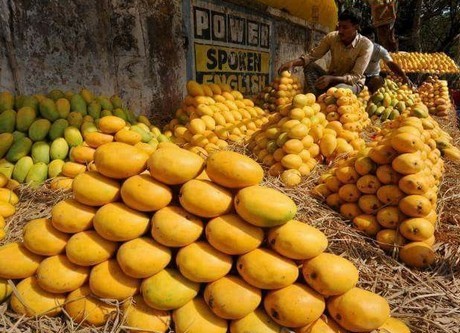LAHORE: In a worrisome development, Pakistan’s mango crop is facing significant challenges due to the impact of seasonal changes this year, leading to concerns of a 20% decrease in production. Experts warn that the effects of these changes have resulted in a limited yield of up to 1.4 million metric tons, down from the expected output.
According to Wajid Ahmad, the head of Pakistan Fruit and Vegetable Exporters (PFVA), the adverse effects of seasonal variations have not only caused a decline in production but have also diminished the orchards’ ability to combat diseases. Ahmad revealed that the target for mango exports this season has been set at 125,000 metric tons, with export operations scheduled to commence on May 20. The projected revenue from mango exports is estimated to reach a substantial $100 million, providing a significant boost to Pakistan’s economy.
The impact of these changes has been felt by mango growers across the country. Speaking to Profit, Rafiqat Ali Bhego, owner of a mango orchard in Mirpur Khas, highlighted the detrimental influence of diseases such as anthracnose and powdery mildew on the mango crop. He added that these diseases, combined with other ailments, have ravaged mango orchards in interior Sindh, causing severe damage to thousands of acres of cultivated land and ultimately resulting in a potential 30% decline in mango production.
Moreover, mango orchards in other districts, including Mirpur Khas, Badin, Sanghar, and Tando Allahyar, are also at risk of these destructive diseases, exacerbating concerns about the overall impact on the country’s mango production, which is a vital agricultural sector for Pakistan.
Shahid Mughal, a landowner in Jhuddo, shed light on the specific diseases affecting mango trees. Anthracnose and powdery mildew spread when borers infest mango trees, causing irreparable damage to the fruit. These infections manifest as shriveled, unhealthy-looking mangoes, leading to significant losses for farmers.
“Efforts to combat these diseases have been made, with various medicines available in the market, but their effectiveness has been limited. Additionally, smaller orchards have been disproportionately affected, as their owners often lack the necessary information and resources to effectively tackle these diseases and implement preventive measures,” he said.
It is pertinent to mention here that last year, Pakistan faced similar challenges, with changing weather patterns severely impacting fruit crops across the country. The early arrival of summer in March resulted in significant damage to the mango harvest, as only 60 percent of the expected yield reached the markets.
As Pakistan enters the summer season, anticipation for the mango grows. However, the recent unpredictable weather patterns have disrupted the delicate balance required for successful mango cultivation, heavily relying on irrigation from rivers and canals.
























